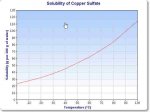I am in the process of selecting a new pool heater. While I know asme and cupro-nickel are overkill for a residential install, for the extra $300 +/- is it worth the expense since I am somewhat concerned about pool chemistry and heater deterioration? My thinking is that if the overkill model lasts a few years longer, I have a better chance that the kids will be grown up and I won't need to replace the heater. But I also know that a very short period of really bad chemistry will destroy any heater quickly.
The two models I am considering are listed below. But, despite the obvious title, I cannot find any Raypak documentation that supports which one actually has the cupro-nickel fins and asme header.
C-R266A-EN-X #50 ASME, DIGITAL W/CAST IRON HEADERS, CUPRO-NICKEL, ELECTRONIC IGNITION, NATURAL GAS, ASME
Raypak 010203 Digital With Cast Iron Headers - Cupro-Nickel
Is it possible the 010203 is just an older model? Does the EN-X of the first mean it is cupro-nickel? C-R266A is listed as being copper fins on the Raypak website. No mention of the EN-X marking.
Both are described as asme and cupro-nickel. I just want to be sure I am interpreting it correctly.
The heater will be located outdoors, but under an appropriate overhang of a shed... meeting all codes, etc. It will be stored indoors in an unheated space in the winter.
Or, am I being completely paranoid about chemistry, and I should just go with a typical residential model? I try to keep my chemicals in line, but they varies more than I would care. Never unsafe, but occasionally higher FC (6-7) than is typical. I test with strips about every other day and weekly with a full kit. About three times a summer I bring a sample to the store. And, while I use trichlor pucks in a feeder at lower feed levels, I mostly try to control the chemicals using the TFP method. I am a novice with only one (Short upstate New York) season of unheated water under my belt. So I am still learning.
Sparing me the laughs, I sincerely appreciate any feedback. Thanks.
The two models I am considering are listed below. But, despite the obvious title, I cannot find any Raypak documentation that supports which one actually has the cupro-nickel fins and asme header.
C-R266A-EN-X #50 ASME, DIGITAL W/CAST IRON HEADERS, CUPRO-NICKEL, ELECTRONIC IGNITION, NATURAL GAS, ASME
Raypak 010203 Digital With Cast Iron Headers - Cupro-Nickel
Is it possible the 010203 is just an older model? Does the EN-X of the first mean it is cupro-nickel? C-R266A is listed as being copper fins on the Raypak website. No mention of the EN-X marking.
Both are described as asme and cupro-nickel. I just want to be sure I am interpreting it correctly.
The heater will be located outdoors, but under an appropriate overhang of a shed... meeting all codes, etc. It will be stored indoors in an unheated space in the winter.
Or, am I being completely paranoid about chemistry, and I should just go with a typical residential model? I try to keep my chemicals in line, but they varies more than I would care. Never unsafe, but occasionally higher FC (6-7) than is typical. I test with strips about every other day and weekly with a full kit. About three times a summer I bring a sample to the store. And, while I use trichlor pucks in a feeder at lower feed levels, I mostly try to control the chemicals using the TFP method. I am a novice with only one (Short upstate New York) season of unheated water under my belt. So I am still learning.
Sparing me the laughs, I sincerely appreciate any feedback. Thanks.



